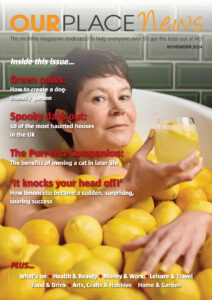There is no such thing as a safe level of alcohol consumption, according to new guidelines from Canada. What does this mean for moderate drinkers?

The Guardian reports that if you are halfway through dry January, and counting the days until you can drink again, the latest news from Canada might make you rethink. Its new alcohol guidelines suggest people drink no more than two alcoholic drinks a week. Two small glasses of wine or a pint and a half of beer a week is what is considered by Canadian health experts as low-risk – a sharp drop from the previous guidelines of no more than 10 drinks a week for women and 15 for men – while no alcohol at all is the only safe limit.
In the UK, our limits are more generous, though the direction they are going in is towards Canada’s. When they were last updated in 2016, the upper limit for both men and women was set at 14 units: the equivalent of seven pints of lower-strength beer or nine small (125ml) glasses of wine. Previously, men had been advised to stay below 21 units a week. The UK’s chief medical officers also made it clear that “there is no level of regular drinking that can be considered as completely safe”.
Should we, then, be following Canada’s lead and cutting the upper limit drastically? A spokesperson for the Department of Health and Social Care says there are “no current plans to update the alcohol limit guidelines”.
However, Richard Piper, the chief executive of Alcohol Change, a charity that campaigns to reduce alcohol harm, says: “There are some elements of the Canadian guidelines we should definitely copy. The first is the clear statement that the less you drink the better, from a health point of view. The second thing that I think is incredibly helpful is they’ve presented a scale.” It shows, he says, “increasing risk as you drink more, in a stepped approach”.
In the UK, with the focus on 14 units, there can be a tendency to think “over 14, bad; under 14, good”, he continues. “But actually under 14 can be bad if all those units are on one night. I understand the chief medical officers in the UK are trying to present something really simple, but I think that simplicity is too crude. I think the Canadian guidelines are simple, but more helpful.” They allow people to decide, says Piper. “To say, ‘I really enjoy alcohol, I’m going to embrace moderate risk.’ They tell you what the risk levels are at different levels, and leave it to you to make that choice.”
It’s the reason he would like to see better and clearer alcohol labelling – not necessarily the scary images that cigarette manufacturers were forced to adopt, but a health warning and a clear indication of the number of units. “I think guidelines and labels are part of the same story,” says Piper.
With alcohol such a central part of British culture, could we ever get to the point where two drinks a week is considered normal? It is
already, among large parts of the population, Piper points out. “Twenty percent of the population don’t drink at all; 60% drink under 14 units a week and often way under. So you probably find that the majority of the population is drinking close to two drinks a week, or less. If you go into most British homes, most adults won’t be having a drink most evenings.”
At least 130,000 people take part in dry January every year, and younger people are drinking less. There have been low-drinking trends, such as “mindful drinking”, the “sober curious” movement and people going “99% sober” – those who rarely drink, but make
occasional exceptions. It can make sense for people who don’t want to put pressure on themselves to give up completely. So there might not be quite the uproar politicians fear if our upper limits were drastically cut. Anyway, says Piper, “This is where they should be
delegating this to the chief medical officer, exactly like they did in the pandemic: let science lead the way.”
It is “absolutely reasonable” to conclude, says Gautam Mehta, an associate professor in hepatology at University College London, “the
safest amounts of alcohol to drink is zero. There’s no absolute safe level of consumption – the data is good on that. There’s a very small benefit in ischemic heart disease, with a very small volume of alcohol, but that’s completely offset by cancer and other risks.”
The problem is, how well is this known by the public? “Probably not very widely,” says Mehta. “Guidelines definitely have an impact. I don’t think we should shy away from the fact that there is no safe limit – that message does need to get out there. We have an issue
with alcohol in this country. After the pandemic, the number of alcohol-related deaths in the UK has gone up by 20%.” Is the upper limit of 14 units too high? “My view is that education, rather than top-down guidance, is the best way to keep people engaged,” says Mehta.
We know, in ways we didn’t even 10 or 20 years ago, how harmful alcohol can be. “Alcohol increases blood pressure, (which can lead) to stroke and heart disease,” says Mehta. Alcohol is linked to cancer, especially “to digestive tract cancers; breast cancers are a significant [alcohol-related] harm. Overall, there are more than 200 diseases that alcohol is associated with, but those are the top ones: cancer, heart disease, stroke. Liver disease occurs at higher levels, so if you were drinking within the current guidance, liver disease wouldn’t be a major concern if you had no other risk factors.”
Binge drinking is worse for you than spreading the units over the week (those “99% sober” drinkers should be wary of this if they intend to consume large quantities, even occasionally). “Pattern of drinking does matter,” says Mehta. “It has an impact on the gut. We think the gut is very important in many chronic diseases and underlies inflammation. You induce what we call ‘gut leakiness’, which essentially means there’s more inflammation from proteins that should stay within the gut, but don’t. When you get beyond the threshold, on a relatively regular basis, we think you’ll have long-term consequences.” The definition of a “binge” is probably lower
than you think. “It’s about six units for women – that’s only two large glasses of wine – and eight units for men.”
Mehta was involved in a study comparing drinkers doing dry January, who had previously been drinking about 20 units a week, with a control group who didn’t give it up. “The changes were quite marked,” he says, describing how people’s blood pressure reduced by approximately the same amount as you would expect had they taken blood pressure medication. Their risk of diabetes went down by about a quarter, and they lost weight. “We also saw changes in growth factors that are connected with cancer. You can’t reduce your cancer risk hugely in a month, but the proteins that are linked to cancer fell by about 70%, a huge reduction. That was the most numerically striking finding.” There were many potential benefits, and although Mehta acknowledges it was a short-term study (and small in terms of participants), “you’d expect, if you carried that on, that that would translate to real health benefits”.
It’s a wonder that anyone drinks anything at all. But many of us do, including Mehta (and me). “I still have a drink,” he says. “It’s about knowing those risks.” If you drink alcohol, and enjoy it – perhaps while socialising with friends, which comes with its own significant health benefits – it’s something to think about over your weekly pint-and-a-half.
(Story source: The Guardian)

